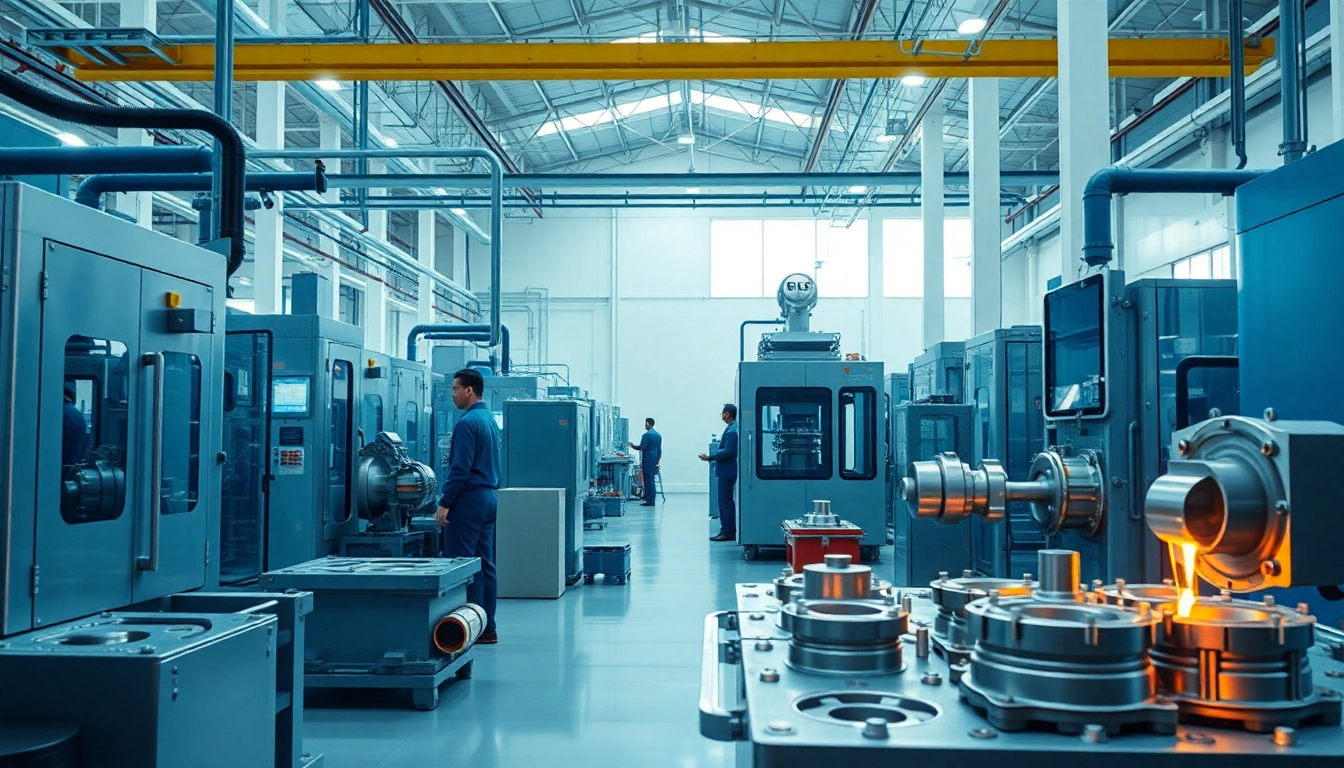The Importance of Diecasting in Malaysia’s Manufacturing Sector
Diecasting serves as a cornerstone in Malaysia’s manufacturing sector, playing an integral role in the production of high-quality metal components. The process, which involves the forced injection of molten metal into molds, offers unparalleled accuracy and efficiency, making it the preferred choice for a variety of industries. As a leading diecaster Malaysia, the commitment to precision and excellence positions Malaysia as a competitive player in the global diecasting market.
1. Overview of Diecasting Processes
Diecasting encompasses several key processes, including hot chamber and cold chamber diecasting. Each method is tailored to specific metal types and dimensional requirements, allowing for the production of intricate designs with minimal waste. Hot chamber diecasting, primarily used for zinc and lead alloys, yields high production rates, whereas cold chamber diecasting is favored for aluminum and magnesium, where higher melting points necessitate different techniques.
2. Key Industries Benefiting from Diecasting
The versatility of diecasting makes it crucial for numerous industries. Automotive manufacturers rely on diecast components for crucial engine parts, transmission housings, and structural elements. The aerospace industry benefits from lightweight and precise components that improve fuel efficiency and performance. Additionally, consumer electronics, industrial machinery, and medical devices frequently utilize diecast parts to ensure durability and reliability.
3. Economic Impact of Diecasting in Malaysia
The diecasting sector significantly contributes to Malaysia’s economy by generating employment and fostering technological advancements. With a growing demand for lightweight components, investments in this industry are projected to increase, leading to expanded export opportunities. Furthermore, diecasting’s capability to produce high-quality products supports Malaysia’s ambition to be a global manufacturing hub by 2025.
Understanding the Diecasting Process
1. Types of Diecasting Techniques
In Malaysia, various diecasting techniques are employed, each tailored to meet specific production needs. Hot chamber diecasting and cold chamber diecasting are the most prevalent methods, but innovative processes like vacuum diecasting and pressure diecasting are gaining traction. These methods improve the mechanical properties of the cast parts, allowing for applications that demand high strength in challenging environments.
2. Materials Used in Diecasting
Common materials used in diecasting include aluminum, zinc, magnesium, and copper alloys. Each metal offers unique benefits: aluminum is lightweight and corrosion-resistant, while zinc provides excellent ductility and hardness. The choice of material is critical as it affects the final product’s performance, cost, and suitability for specific applications.
3. Quality Control Measures for Efficiency
Quality control is paramount in diecasting, ensuring that products meet stringent industry standards. Advanced techniques such as computerized numerical control (CNC) machining and non-destructive testing (NDT) are employed to monitor the integrity of diecast components. Additionally, maintaining robust quality assurance protocols not only enhances product reliability but also minimizes waste and rework costs.
Challenges Faced by Diecasters in Malaysia
1. Technological Integration Issues
As the diecasting industry in Malaysia evolves, the integration of advanced technologies poses significant challenges. Many manufacturers struggle with updating legacy systems and investing in new equipment that incorporates automation and data analytics. Successfully navigating these technological transitions is essential for maintaining competitiveness in the global market.
2. Environmental Considerations and Regulations
The diecasting industry must also adapt to growing environmental regulations. Manufacturers are increasingly required to adopt sustainable practices, such as minimizing emissions and reducing waste. Innovations in recycling and waste management are vital for fostering a more sustainable manufacturing process while complying with local and international environmental standards.
3. Skill Gaps and Workforce Development
Another challenge facing diecasters in Malaysia is the skill gap in the workforce. As technology advances, continuous training and development become essential to equip workers with the necessary skills. Partnerships with educational institutions and government initiatives aimed at boosting technical training programs can help address this issue, ensuring a skilled workforce for the future.
Innovative Solutions for Diecasting Efficiency
1. Automation and Robotics in Diecasting
Automation is transforming diecasting operations, enhancing both speed and precision. Robotic arms and automated systems streamline production lines, reduce labor costs, and increase product consistency. These innovations not only improve efficiency but also allow workers to focus on quality assurance and complex problem-solving tasks.
2. Advanced Material Solutions
The development of new materials also plays a critical role in advancing diecasting efficiency. High-strength alloys and composite materials are becoming more widely used, providing better performance and durability. Manufacturers are exploring these advanced materials to meet the increasing demands for lightweight and high-performance components.
3. Case Studies of Successful Innovations
Several companies in Malaysia have successfully implemented innovative diecasting solutions. For instance, one leading manufacturer adopted a fully automated diecasting line, resulting in a 30% increase in production output while significantly reducing defects. Such success stories highlight the potential gains from investing in advanced technologies and streamline operations.
Future Trends in Diecasting Manufacturing
1. Emerging Technologies in Diecasting
The diecasting industry is on the brink of significant technological advancements. Emerging technologies such as artificial intelligence (AI) and Internet of Things (IoT) integration are expected to revolutionize the sector. AI can optimize production processes by predicting failures and suggesting maintenance schedules, while IoT devices can facilitate real-time monitoring of production metrics.
2. Predictions for the Diecasting Industry by 2025
By 2025, it is anticipated that the diecasting industry will experience substantial growth, driven by increased demand from the automotive and aerospace sectors. As these industries grow, the need for lightweight, durable components will escalate, further solidifying diecasting’s role in modern manufacturing.
3. Positioning Malaysia as a Global Leader in Diecasting
To become a global leader in diecasting, Malaysia must invest in research and development initiatives. Collaborations between academia and industry can foster innovative solutions that address emerging challenges. Additionally, promoting Malaysia as a hub for diecasting through trade shows and exhibitions can attract international partnerships and investment, ultimately boosting the local economy.









